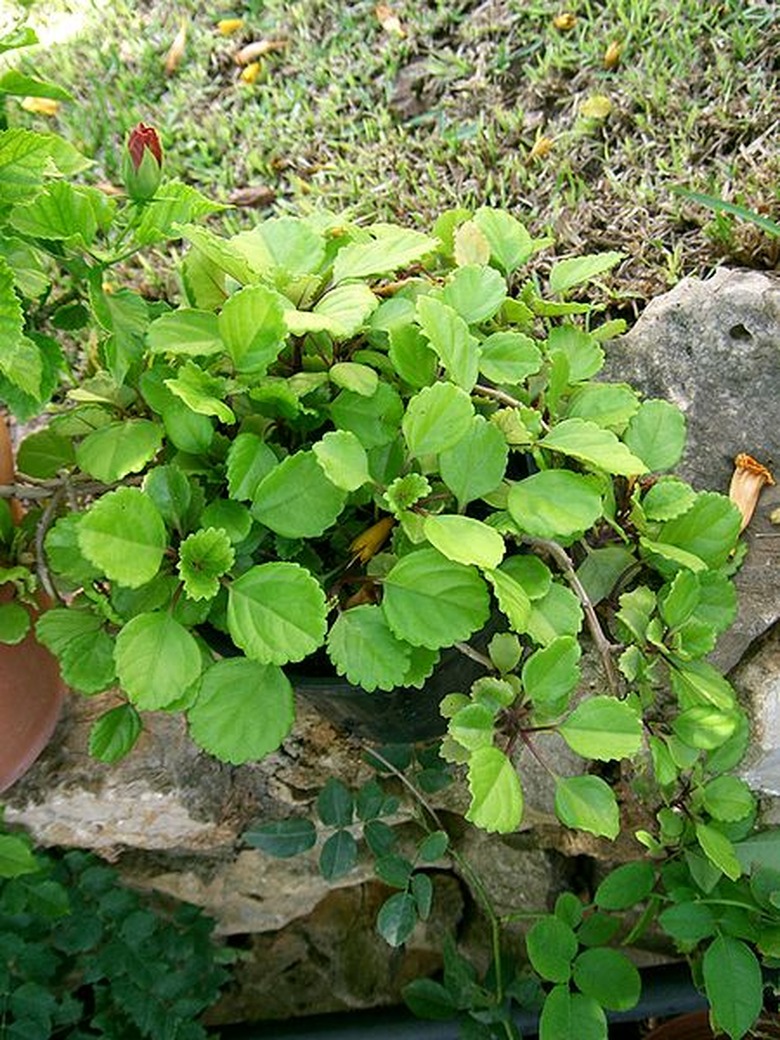How To Care For Swedish Ivy
Things Needed
- Peat-based potting soil
- All-purpose potting soil
- Peat moss
- Pebble tray (optional)
- Mister
Tip
Wash leaves in tepid water to remove household dust. Shine the tops of the leaves by applying a dab of mayonnaise and wiping with a paper towel.
Warning
Do not apply mayonnaise to the underside of leaves, as this will clog the pores.
Swedish ivy is a misnomer, as this delightful vining plant is neither Swedish in origin, nor is it a true ivy. Native to Africa and Australia, Swedish ivy thrives in bright light and high humidity but is not overly sensitive to normal household conditions. As a vining plant, it makes an attractive hanging basket with its shiny green leaves with scalloped edges. This easy-to-grow plant produces abundant lush green foliage with delicate white blooms, and Swedish ivy creates atmosphere and brings a bit of nature inside during long winter months.
Step 1
Plant Swedish ivy in a peat-based potting soil, or mix one part peat moss to two parts all-purpose potting soil. Place pebbles or broken shards of old plant pots over the drainage holes before filling the pot with soil to improve drainage.
Step 2
Place in bright light near a sunny window. Eastern windows that provide strong morning light during the summer months are ideal. Winter months may require moving to a western or southern window where the plant receives filtered light through a sheer curtain. Bright afternoon sun will burn the leaves of Swedish ivy.
- Swedish ivy is a misnomer, as this delightful vining plant is neither Swedish in origin, nor is it a true ivy.
- This easy-to-grow plant produces abundant lush green foliage with delicate white blooms, and Swedish ivy creates atmosphere and brings a bit of nature inside during long winter months.
Step 3
Water thoroughly when soil is dry to the touch. Allow water to run through the bottom of the pot to ensure adequate watering. Leaves that yellow and drop are an indication of overwatering. Shriveled stems or wilted leaves indicate a lack of water.
Step 4
Mist your Swedish ivy daily to maintain proper humidity levels. A pebble tray is an easy alternative to misting but may not be convenient, or practical, for hanging plants. Place plants in areas that are naturally high in humidity, like near the kitchen sink or in the bathroom.
- Water thoroughly when soil is dry to the touch.
- A pebble tray is an easy alternative to misting but may not be convenient, or practical, for hanging plants.
Step 5
Apply water-soluble fertilizer on a three-week schedule during active growth in spring and summer. Once plant growth slows, maintain a schedule of half-strength fertilizer once a month.
Step 6
Pinch out new growth on the terminal ends of vines regularly to encourage the plant to send out new growth along the vine. This creates a compact plant with lush foliage.
Step 7
Cut back to 4 to 5 inches if the plant becomes leggy or vines fail to produce new growth. Root the cuttings in a jar of water and replant to start new Swedish ivy. Cutting the plant back in spring will revive old plants.
- Apply water-soluble fertilizer on a three-week schedule during active growth in spring and summer.
- Cut back to 4 to 5 inches if the plant becomes leggy or vines fail to produce new growth.
